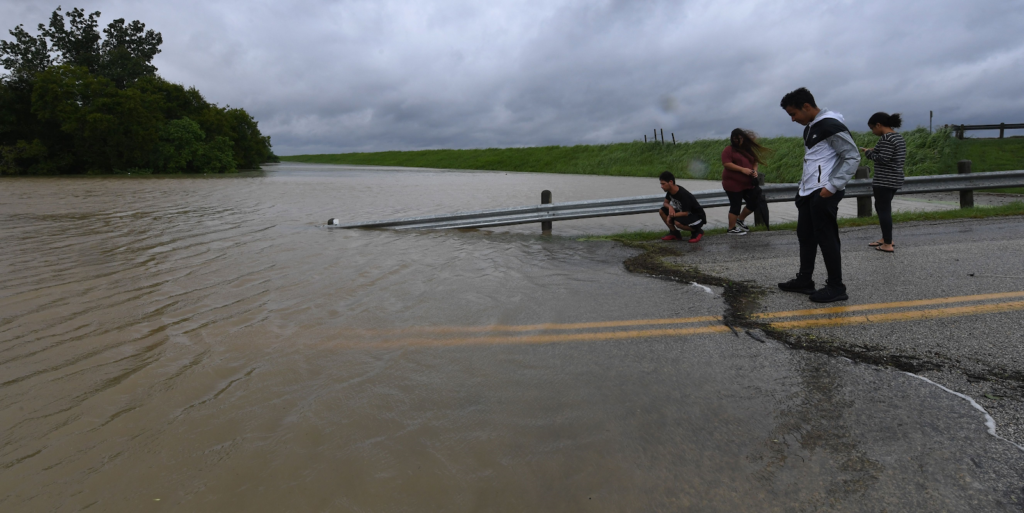The Dangerous Effect of Climate Change that is Often Overlooked

Image courtesy of MARK RALSTON/AFP/Getty Images
By Shannon Rose Miekka
When Americans think about climate change, we leave it as a problem for the distant future.
However, 2020 has been a landmark year in more ways than one, and when it comes to our environment, it is clear that we must act now.
This year, the United States has seen more droughts, floods, heatwaves, sea-level rise, and extreme weather events. In August, it took less than two weeks for wildfires to burn through over a million acres of land in California. The following month, the world saw its hottest September on record. And October is forecast to be hotter and drier than average. What’s next?
The New York Times recently published an article called “How Climate Migration will Reshape America” written by Abrahm Lustgarten, a Pulitzer Prize-winning environmental journalist. According to Lustgarten, nearly half of all Americans will soon experience a decline in environmental quality, particularly more heat and less water.
800 million people— or 11% of the world’s population— are currently vulnerable to the impacts of climate change, and this number is only expected to climb. Climate migration is seldom discussed or understood, but the consequences of a warming planet lead to the potential movement and displacement of hundreds of millions of climate refugees around the world.
When Americans hear the word refugee, we do not think of ourselves or our neighbors. But climate change will soon create refugees in our own communities. The Journal of the Association of Environmental and Resource Economists estimates that in the next 45 years, 1 in every 12 Americans who live in the southern half of the country will be displaced due to climate influences alone.
“Such a shift in population is likely to increase poverty and widen the gulf between the rich and the poor,” Lustgarten said. “It will accelerate rapid, perhaps chaotic, urbanization of cities ill-equipped for the burden, testing their capacity to provide basic services and amplifying existing inequities. It will eat away at prosperity, dealing repeated economic blows to coastal, rural and Southern regions, which could in turn push entire communities to the brink of collapse.”
Climate migration is already seen in the present day. Communities in southern Louisiana, coastal Georgia, and Florida have been forced to relocate, depicting a process recently coined as “climate gentrification.” By the year 2060, rising sea levels could displace up to 13 million coastal residents, and unfortunately, the Latino, Asian, and Black communities who live in the most vulnerable low-lying districts will be affected first.
When millions of Americans are forced to relocate, it is likely that after leaving one environmental challenge, they will run into another. Sociologist Matthew Hauer published some of the first research about climate migration, and he predicts that 13 million Americans will be forced to move away from submerged coastlines. This number is likely an underestimate; when factoring in those who do not live on the coast fleeing from wildfires and other disasters, the total of American climate refugees could easily be tens of millions higher. Even 13 million climate migrants would rank as the largest migration in North American history.
One problem that Lustgarten notes is the fact that American businesses have found a way to profit off of climate migration. Census data shows how Americans move: toward heat, coastlines, and drought, regardless of evidence of natural disasters. The property-insurance system incentivizes Americans to move to locations that are vulnerable to dangerous climate change events.
“From state to state, readily available and affordable policies have made it attractive to buy or replace homes even where they are at high risk of disasters, systematically obscuring the reality of the climate threat and fooling many Americans into thinking that their decisions are safer than they actually are,” says Lustgarten.
Image courtesy of Grist
The 2018 National Climate Assessment warned that the U.S. economy overall could contract by 10 percent. In 1950, less than 65 percent of Americans lived in cities. By 2050, it is estimated that only 10 percent will live outside of them, in part due to climate change. The World Bank says that fast-moving climate urbanization leads to rising unemployment and deepening poverty.
This is our future: the bottom half of the country will grow uninhabitable, dangerous, and unbearably hot. Around 10 percent of Americans—from South Carolina to Texas to Southern California—will be able to move north for a better economy and a safer environment. The poor and the elderly will be left behind.
It is easy for Americans to see the effects of climate change as a problem for the distant future, a problem only in the present for less developed countries. In our capitalist and corporatist society, those in power will only take serious action if the problem hits their wallets, and it is clear that the economy will be seriously affected if solutions aren’t explored today.





